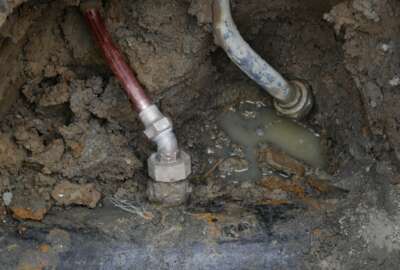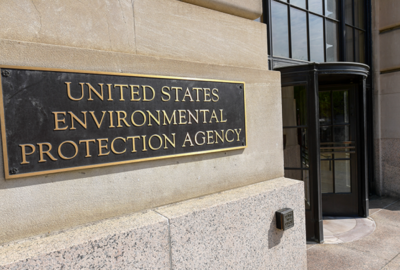Former EPA employees gear up to resist what they fear from the Trump administration
A group comprised of former EPA employees is gearing up again to resist what they fear from the Donald Trump administration.
When Donald Trump first became president, he took a go-slow approach to the spread of environmental regulation. A group called the Environmental Protection Network got together to oppose this approach. Comprised of former EPA employees, it’s gearing up again. Network executive director Michelle Roos joined the Federal Drive with Tom Temin to discuss what it plans to do.
Interview transcript:
Tom Temin: And you are a former EPA employee, so you know what goes on in EPA.
Michelle Roos: I do.
Tom Temin: All right. And your group are saying you’re preparing now for what you expect from the Trump administration redux. What are you expecting?
Michelle Roos: Sure. Well, this is a little bit of background. We were founded right after Trump was elected the first time. A couple of dozen former EPA, including former Republican and Democratic political appointees and career staff, gathered in a living room in Washington, D.C. and said, ‘We have to be ready. What if he goes through with his many campaign promises to basically eviscerate the Environmental Protection Agency?’ So we operated for the first four years in that defense mode, protecting science, clean air, clean water against numerous rollbacks to environmental and public health protections. We actually continued the last four years and we continued our national policy work. We provided pro bono technical assistance to front-line communities. And now that he is our president-elect once again, we never slowed down. So we’re going to continue. It’s going to look a lot different, I think, than the last four years. We anticipate being in a defense mode. And I can speak a little bit about some of the things that are already coming out.
Tom Temin: And do you distinguish between defense mode and what we’re hearing from some sectors resist mode?
Michelle Roos: I mean, we’re a group of former bureaucrats. Like I sometimes call our volunteers bad ass baby boomers. Like this is our very authentic, earnest group of folks. These are toxicologists. These are lawyers. These are policy wonks. These are not what you imagine is like the resistance. And I think what we are is a voice for truth, science, the law, transparency.
Tom Temin: All right. And you mentioned rollbacks. What was rolled back in particular that you feel was in contravention of science or law?
Michelle Roos: I mean, there are so many. There’s literally trackers online that show the hundreds of rollbacks. I think some of the most damaging are things that we don’t have time to roll back on. So when you slow down greenhouse gas emissions reductions, you endanger all of humanity. We don’t have that kind of time. So you saw that both in the power sector and the mobile sources sector. You saw many instances in which the previous Trump administration slowed down, reversed, rolled back those kinds of regulations. You also saw a massive attack on science and the ability to believe science over politics. So there’s a massive, I think, transparency in science, which was like a misnomer, which was basically saying that science cannot be used in multiple applications in creating federal policy, which just counteracts, I think, what most people believe in and it harms public health tremendously.
Tom Temin: Let me ask this: when does contradicting specific science stop and making policy decisions based on a balance of science and economics and job creation or destruction? I mean, every EPA decision exists within that balance, even though the science says you would get rid of every car tomorrow. Well, just to make an extreme example, that would cause great destruction. So, you know what I mean. So when does it become a problem of balance based on philosophy and actually opposing science?
Michelle Roos: I mean, we’re kind of lucky in this frame. We actually just released a report called Breathing Easy, which summarized the impacts both on public health and the economy of the last four years of air regulations coming out of EPA. They will deliver over $250 billion in net benefits annually. When you reduce emissions, air pollution, this is reducing premature heart attacks. This is asthma attacks. These are exacerbated asthma attacks. This is missed workdays, missed school days. So you don’t have to choose between the economy and the ability to breathe. It’s intimately connected.
Tom Temin: We’re speaking with Michelle Roos. She is executive director of the Environmental Protection Network, made up of many federal EPA employees. And the other question, especially with automobile emissions, the amount of climate change, if you will, has not changed as a result of a third of our cars or a quarter of our cars being electric. It has shipped a lot of wealth to China. And that is balanced again, just playing devil’s advocate here against the fact that China and India are vastly increasing their output of greenhouse gas. And so at what point are we kind of shoveling against the ocean with tiny incremental changes in what the United States does?
Michelle Roos: So I’m an engineer. I’m not an economist. I love numbers. And I just think when you’re looking at these kinds of statements, like I just think there’s a lot of details that I can’t argue with at the moment. But I sense can be argued many different ways. So I’m not going to.
Tom Temin: Yeah, no, not an argument. I just wondered if that question comes up.
Michelle Roos: Again, like I think that climate change is a very, very complicated thing. I will rest on this, which is like an area I know much more about than international climate policy personally, is about localized health impacts. And the thing is that if you live next to a bus depot, if you live next to a highway, if you live near a port or work at a port, your health is compromised on the daily. So there is the greenhouse gas discussion, which again, I apologize that is not my expertise, but I will say from a localized air pollution, when we think about the people that live in the United States, when we think about our families, this is a this is a massive net benefit.
Tom Temin: Sure. And I’m old enough to remember when you couldn’t see Los Angeles from the ridges because of the smog that we used to have. So nobody would argue that tailpipes are in better shape than they were 50 years ago when the EPA got into existence. And what did you do when you were at EPA?
Michelle Roos: I mean, I had the pleasure of doing a lot of different things. My career at EPA was relatively short compared to most of our volunteers. Most of our volunteers work 20, 30, 40 years and worked up the ranks. I started my EPA career in the Office of Air and Radiation in Washington, D.C. Eventually, I moved to California where I worked for EPA’s Region 9, and I cofounded with a bunch of wonderful EPA colleagues and the West Coast Collaborative, which was an effort to reduce emissions from big diesel engines. A major contributor to public health.
Tom Temin: Right. Yes. Nobody likes driving behind an old bus, you might say. And in the sense of transparency, who was behind your group? I mean, how do you keep going funding wise?
Michelle Roos: Yeah, we are mostly private foundation funding. About 10% of the last year, year and a half of our budget did come from federal funding and we do get individual donations. I think it’s actually kind of an amazing thing. We assumed early on, we had 650 some odd EPA alumni, volunteers. We assume other people that will make $100, $150 contribution annually. And then there’ll be people that will volunteer a lot. But actually, there’s a tremendous amount of overlap. Many of our volunteers are also are our donors.
Tom Temin: All right. And what is your best advice for what would you tell the incoming EPA person from the Trump administration? What would you like them to know?
Michelle Roos: So many things. I think I’m thinking of two things first and foremost. One is that career staff are not the enemy. Career staff are public servants that have a tremendous amount of information, experience, expertise and want to move the ball forward. So do not close them out, bring them in, seek their advice, collaborate. And I think there’s room for progress. I think, secondly, there’s a lot of press right now about the idea of moving EPA headquarters out of Washington, D.C., of moving regional offices out of the cities that they’re in, basically a scare tactic to try to get folks presumably to leave. You can’t do that and have a sophisticated regulatory agenda. You cannot cause panic throughout the agency and do whatever your objective is. So I’d say like, ‘Let’s not get distracted. Let’s buckle down. We all want clean air. We all want clean water.’ And maybe I’ll end with this point. We just did a postelection poll. Right. And we found that there is an overwhelming public support for EPA across all demographics, including Trump voters. This was a national poll. We surveyed over 1,000 folks. 76% of folks who voted for Trump oppose attempts to weaken EPA. Eighty-one percent of folks that voted for Trump want Congress to increase EPA funding or keep funding steady. And 72% of Trump voters support increasing federal funding to communities disproportionately harmed by air and water pollution. Trump being elected was not a mandate to eviscerate EPA. It was not a mandate to stop all regulation. Folks want clean air and clean water. They want to be able to have better lives for their children. And so I would encourage the incoming administration to pay close attention to those numbers.
Copyright © 2024 Federal News Network. All rights reserved. This website is not intended for users located within the European Economic Area.
Tom Temin is host of the Federal Drive and has been providing insight on federal technology and management issues for more than 30 years.
Follow @tteminWFED






